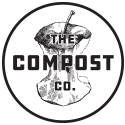Choosing the right soil mix isn’t just about what you’re planting — it’s about scale, structure, and performance. When you’re managing a large project like a school garden program, municipal growing beds, or a commercial farm install, the soil you choose directly impacts growth success and maintenance requirements.
One of the most common comparisons we hear is raised bed soil vs garden blend. While both serve important purposes, they are designed for different conditions. In this guide, we’ll break down the differences between the two, explain when to use each, and help you choose the right bulk mix for your next project.
What is Raised Bed Soil?
Raised bed soil is a premium, lightweight soil blend designed for above-ground growing environments. These mixes are often fluffier, well-draining, and rich in organic matter, which allows roots to establish quickly in confined spaces.
Key characteristics of raised bed soil:
- Loamy, light texture to prevent compaction
- High organic content to improve nutrient availability
- Balanced water retention and draining
- Often includes compost, screened topsoil, pine fines, or peat moss
Raised bed soil is best for:
- Community, school, and home garden beds
- Urban agriculture containers
- Institutional or education installations
- Rooftop and elevated planters
Because raised beds aren’t in contact with native soil, the mix has to do all the work… structure, drainage, fertility, and aeration. That’s why it’s critical to invest in a high-quality raised bed mix when growing at scale.
What is Garden Blend Soil?
Garden blend soil is typically used for in-ground planting where the goal is to improve native soil with added organic matter and structure. It’s often heavier than raised bed soil and may include more topsoil or sand, depending on the region.
Key characteristics of Garden Blend Soil:
- Denser composition for in-ground use
- Designed to mix with or amend existing soil
- Contains compost, screened topsoil, and sometimes sand or clay
- Lower per-yard cost than raised bed soil
Garden Blend Soil is best for:
- Ground-level gardens
- Soil amendment on large lots
- Planting trees and shrubs
- Lawn or turf installations
This blend is ideal when you’re improving poor or compacted soils or filling new garden zones that already connect with native soil ecosystems.
Key Differences at a Glance
Feature
Intended Use
Texture
Drainage
Organic Matter
Root Environment
Cost per Cubic Yard
Raised Bed Soil
Above-ground containers
Light & fluffy
Excellent
High
Self-contained
Higher
Garden Blend Soil
In-ground planting
Denser, heavier
Moderate to good
Moderate
Mixed with native soil
Lower
If you’re building out dozens of raised beds or prepping multiple garden plots, these differences matter in both performance and budget planning.
Buying in Bulk: What You Need to Know
When sourcing soil for large-scale use, quality and consistency become even more important. Buying soil in bags may work for a single homeowner, but if you’re filling 40 raised beds for a school district or delivering truckloads to a nonprofit farm, bulk soil delivery is the only practical choice.
Here’s what to look for in a bulk soil supplier:
- Consistent blend and particle size
- Available analysis or specs (e.g., pH, organic content)
- Delivery scheduling that aligns with your install team
- Options for both raised bed soil and garden blend
- Support choosing the right mix for your use case
At The Compost Company, we offer both mixes in bulk, screened for consistency, and available by the cubic yard. We also offer custom blends if your project has specific requirements.
When to Use a Custom Soil Blend
Some large projects benefit from a hybrid mix tailored to your needs. For example, a school district might request a blend that includes more compost for nutrition, while a farm startup may need a soil with better drainage for root vegetables.
Custom soil blends can adjust:
- Compost ratio
- Sand or perlite for drainage
- pH balancing for specialty crops
- Nutrient mix based on application
If your project spans multiple zones or growing conditions, a custom soil blend could be more cost-effective than managing multiple product types on-site.
Set Yourself Up for Success
According to Penn State Extension, a soil mix that includes approximately 30% compost and 70% topsoil is ideal for raised bed applications. This blend offers strong structure, balanced drainage, and nutrient retention, which are all essential for healthy plant growth in self-contained environments like raised beds.
When you’re building at scale, small soil decisions have a big impact. Choosing between raised bed soil and garden blend starts with understanding how each mix performs in your project environment. Whether you’re installing dozens of raised beds, planting rows of fruit trees, or amending soil across a park system, the right soil mix helps your plants, and your project, thrive.
Need help choosing the right soil mix for your project?
We supply premium raised bed soil and garden blend in bulk, with custom options available. Get consistent quality, expert support, and delivery you can count on.
Submit an Order OnlineUse Our Compost Calculator

